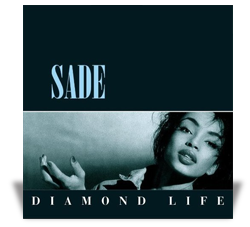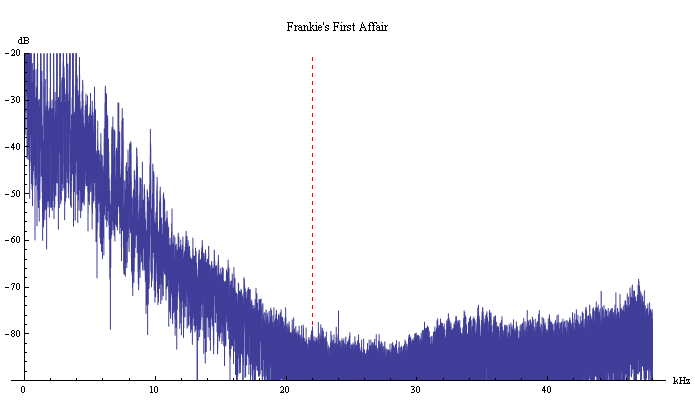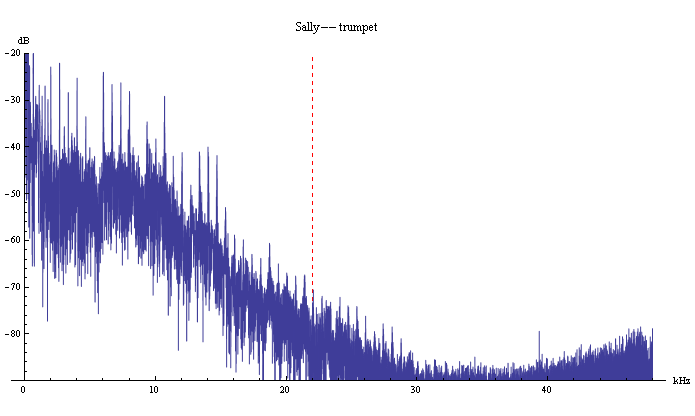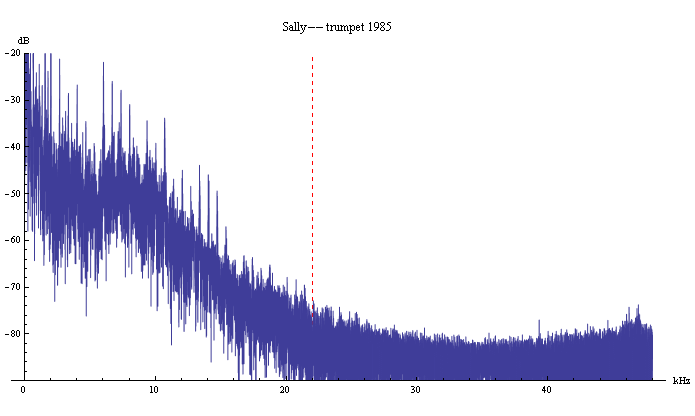 Diamond Life was the 1984 debut album of the British group Sade, fronted by Nigerian-born, British vocalist Helen Folasade "Sade" Adu. Its smooth, sophisticated soul/pop sound took it to No.2 on the UK pop charts and, the following year, to No.5 on the US charts. Sade (the group) went on to release other chart-topping albums, and Adu is the top-selling British female solo artist of all time. In the nearly 30 years since Diamond Life’s release, much has been written about album, singer, and group. I have nothing original to add to that discussion, and won’t recap it here; this article is specifically about the new LP reissue of Diamond Life from Audio Fidelity (AFZLP 089).
Diamond Life was the 1984 debut album of the British group Sade, fronted by Nigerian-born, British vocalist Helen Folasade "Sade" Adu. Its smooth, sophisticated soul/pop sound took it to No.2 on the UK pop charts and, the following year, to No.5 on the US charts. Sade (the group) went on to release other chart-topping albums, and Adu is the top-selling British female solo artist of all time. In the nearly 30 years since Diamond Life’s release, much has been written about album, singer, and group. I have nothing original to add to that discussion, and won’t recap it here; this article is specifically about the new LP reissue of Diamond Life from Audio Fidelity (AFZLP 089).
This remastering by Kevin Gray is being released in a numbered, limited edition pressed on 180gm virgin vinyl. Audio Fidelity’s president, Marshall Blonstein, told me that the source was an analog tape provided by Sony. Like the original, each AF disc comes in a shiny gatefold jacket with lyrics and photos on the inside. My sample had a commendably low noise floor and was free of ticks, pops, and other extraneous noises -- as it should be for the premium price of $29.99 USD. There was a tiny bit of distortion in a few places in "Frankie’s First Affair," but nowhere else. If I hadn’t been listening attentively through an exceptionally revealing system, I probably wouldn’t have noticed even those -- but it’s my job to nitpick.
I’ve previously written about the problem with being too specific about the sound of any particular LP in the context of a music review, chiefly because analog front-ends vary wildly in their degree of resolution and even basic tonal balance. When I received my copy of Diamond Life, I was reviewing Musical Fidelity’s M1ViNL phono preamplifier. That component resolves more detail than my Trigon Audio Vanguard II, and has more extended high frequencies, less bass, and none of the Trigon’s added warmth. For those reasons, the LP sounded different depending on which phono stage I used, but they agreed in some basic findings.
The Audio Fidelity edition was crisp, clean, and well focused. Adu’s solo voice was center stage, the instruments spread from left to right across the width of the soundfield, and the entire presentation set slightly back of the speaker plane. I even heard some discrimination and depth between instruments and the placement of Adu’s voice from track to track. That voice was often set fairly far back in the mix, and sounded relaxed and natural, with a little extra ambience around it on most tracks. Paul Denman’s electric bass was well defined, with appropriate weight. What I found a little disconcerting was the highly processed character of many of the drum set parts, which sounded as unnatural as from any CD or, worse, MP3. This edition was sourced from analog tape, and three drummers are listed as having played on the sessions; I wondered why it should sound like a cheap drum machine.
The recording
Digital recording was certainly around when Diamond Life was being made, but in 1984 -- unlike now -- it was the more expensive option. Sade was an unknown band, and wouldn’t have warranted the use of cutting-edge technology; it’s reasonable to assume that the original recording was made on analog tape. (A definitive answer might be out there on the Web somewhere, but I wasn’t able to find it.) It’s possible to record a studio album with the microphones capturing all of the musicians playing together in the same room -- just as in a live recording, but with the possibility of retakes. However, Diamond Life was made the way most rock and pop albums are: It was constructed by recording each part individually, then assembling those tracks into a final mix. You won’t hear a natural sense of space on any edition of this album because the musicians never played and sang together in the same room at the same time.
I got most of my information on the recording process by watching two YouTube videos posted by Paul Cooke, the main drummer for the album. Cooke clearly has some bitterness about being forced out of the band (or leaving voluntarily, depending on which story you believe), but his description of the production provided an answer to my questions about the drums.
Sade Adu and Robin Millar, the album’s producer, wanted a very tight, mechanical drum sound, so Cooke was asked to play to a click track. The result was then processed in some way. Cooke also talks about having his drums sampled, but it wasn’t clear to me whether the samples were used on the original release of Diamond Life or on subsequent albums and the re-releases. Although analog samplers do exist, it’s far more likely that any drum sampling would have been done digitally, and probably not even at the 16-bit/44.1kHz resolution of the CD medium. Given all that, it’s not surprising that the drums don’t sound natural -- if anything, the Audio Fidelity LP highlights this unnaturalness. You may have never before heard such a high-fidelity reproduction of a low-fidelity instrument.
Editions compared
Diamond Life has been reissued many times over the years. For this review, I rounded up a very clean and well-cared-for pressing of the 1985 US LP (Portrait/Epic BFR 39581) that weighs 116gm. I also purchased two CD editions. Amazon.com lists a 1990 release and a 2000 remaster. I know exactly what I got with the 2000 remaster (Epic EK 85240) because I ordered it directly from them, and it arrived bearing a little sticker that stated "Sade Remaster 2000." Otherwise, nothing anywhere on the back cover or in the liner notes indicates that this is not an original CD release. I had to order the 1990 CD edition (Portrait/Epic RK 39581) used, so I can’t be sure what it really is. On the front cover it does say "Digitally Remastered Analog Recording," but the only date on it is 1985.
The "1990" CD had extra-crispy highs that I found fatiguing after a track or two, and Adu’s voice had a somewhat forward, bright, grainy texture. I immediately noticed that the channels were reversed in "Hang On to Your Love": the tiss tiss vocal part came from the right rather than the left, and the guitar part, which is split between the channels, was also flipped. It took me longer to notice the swap in "Smooth Operator"; the saxophone was just to the right of center rather than just to the left, and the swish swish of the sand blocks once the track gets going was also on the right rather than the left. The 2000 remaster had a higher overall level and less variation in volume level among instruments. That put it more in line with the sound of modern pop releases, but it hasn’t been ruthlessly compressed, as those so often are. Thankfully, the high end wasn’t edgy, as in the "1990" version.
The original LP sounded better than either CD: It had better definition across the audioband, but remained relaxed. There was, however, a significant amount of distortion in "Frankie’s First Affair." (Although I didn’t measure it, I think the pushed vocal lines on this cut may be the loudest thing on the LPs -- which would explain why I heard distortion there on both pressings, but nowhere else.) The Audio Fidelity LP was the clear winner: tight and articulate in the details, while never pushing any of those details forward to become irritating. The bass was more deeply extended and well defined than from any of the three other editions. I noticed that characteristic in all of the tracks, but most clearly in the bass line that opens "Cherry Pie." The next song, "Sally," sounded significantly more natural than anything else on the album. With the Audio Fidelity LP, the cymbal strokes shimmered metallically -- whereas they were slightly muted on the 1985 LP, raspy on the "1990" CD, and merely shaped fuzz on the 2000 remaster.
Analysis
As I did in my comparison of the CD and LP editions of The Decca Sound boxed set, I decided to look for some objective means of establishing the Audio Fidelity LP’s superiority over any possible CD version. Once again, the only indications I could get were from looking at frequency spectra, and I heard little from this recording that was promising. A sultry voice is not rich in upper harmonics, nor is a saxophone when it’s played into a warm microphone. Percussion sounds -- ride cymbals, hi-hats, bells -- have a lot of high-frequency information, but it’s very hard to discriminate from background noise.
I digitized the LPs by running the output of the phono preamplifier into the line inputs of my handy Tascam DR-40 sampling at 96kHz. I took brief snippets that I thought might produce useful data, applied a Hann window to each one-second sample, did a discrete Fourier transform on both channels, and averaged the results. The height of the graph at any point indicates the strength of that frequency relative to the strongest frequency in the analyzed segment. Because I’m not normalizing across tracks or albums, changes in the noise floor from graph to graph should be ignored -- the noise floor will seem higher if the sample is taken from a soft section. That variation does not affect the analysis.
This first graph is pretty representative of what I saw across Diamond Life. It’s taken from the first second of "Frankie’s First Affair," and includes some nice ride-cymbal shimmer and a bit of saxophone. No high-frequency information beyond the CD’s upper limit of 22.05kHz (indicated by the dashed red line) is obvious.

In "Sally," I found what I was looking for:

A muted trumpet is playing in the background. The spikes, though low in level at high frequencies, are the upper harmonics of that instrument. They’re unlikely to be artifacts, since we don’t see them when the trumpet isn’t playing.

Analyzing the same trumpet segment from the 1985 LP shows less frequency extension than the same passage from the Audio Fidelity LP.

Conclusions
No amount of remastering can make a multitracked and processed studio pop album sound like a purist audiophile recording. The point of such reissues is to get you closer to the sound of the master tape -- whatever happens to be on that tape. The Audio Fidelity LP of Sade’s Diamond Life delivers on that promise. Each element of the mix is clear, but they still hang together cohesively. Adu’s voice, the saxophone, and the electric bass all sound, if not true to life, then at least truer to the microphone feeds. Some of the percussion parts now sound better, while the processing done on others is now more obvious. Hey, what do you expect? It was the 1980s, after all. If you’re a Sade fan with a good turntable setup, you should pick up a copy of Audio Fidelity’s LP before they’re all gone.
. . . S. Andrea Sundaram
andreas@soundstagenetwork.com






















